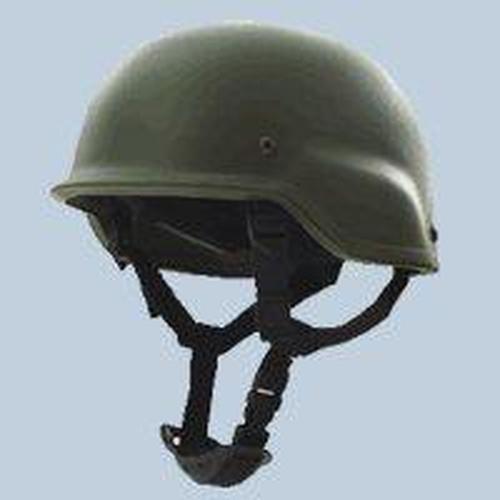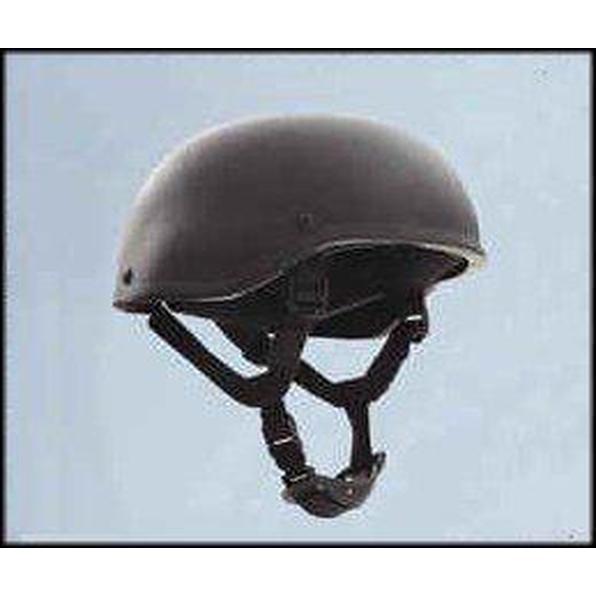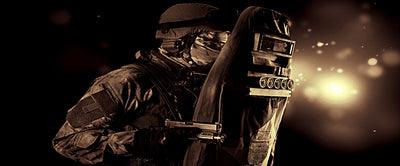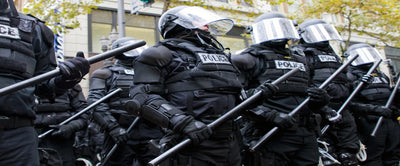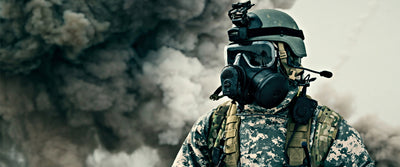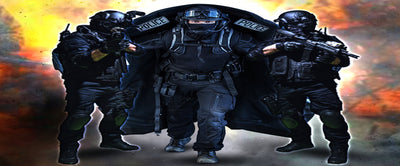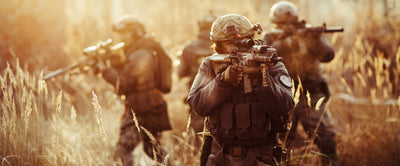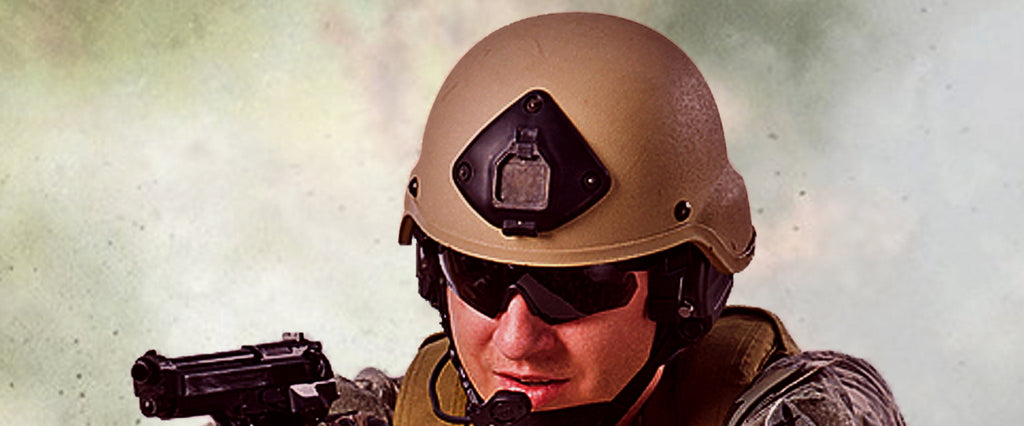
Ballistic Helmet Buyer's Guide
Knowing which helmet to choose will depend on the use. It doesn’t matter whether you are in military, law enforcement, or simply a person who feels it’s important to be prepared for civil defense situations.You need to do your research when it comes to choosing the right ballistic helmet.
Let’s start with a brief history of the ballistic helmet.
TABLE OF CONTENTS
-
1
What is the history of ballistic helmets?
-
2
Why do I need a ballistic helmet?
-
3
What are the most commonly available ballistic helmet types?
-
4
What accessories I can get with a helmet?
-
5
What is National Institute of Justice (NIJ) rating system?
-
6
What are the legal implications of buying/owing a ballistic helmet?
-
7
What are the obsolete ballistic helmets?
-
8
What are the top ballistic helmet options I should be aware of?
-
9
How to Make Sure Your Ballistic Helmet Fits?
-
10
Are there any ballistic helmet tips available?
-
11
What are the frequently asked questions on ballistic helmets?
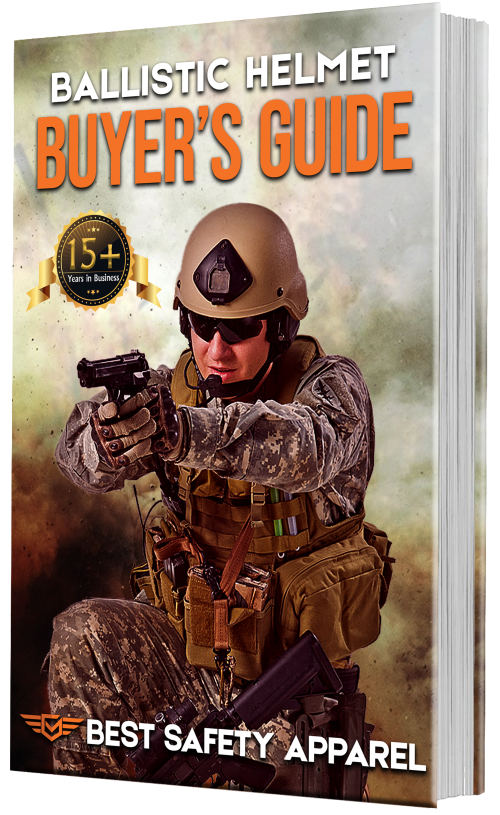
History
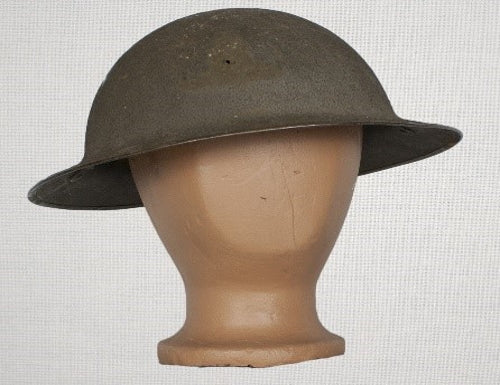
Helmet or Mark One, which was meant to keep debris away from the face. There was no real engineering to this helmet, though a lining was added, and a chin strap was incorporated into the design to help with balance and performance.
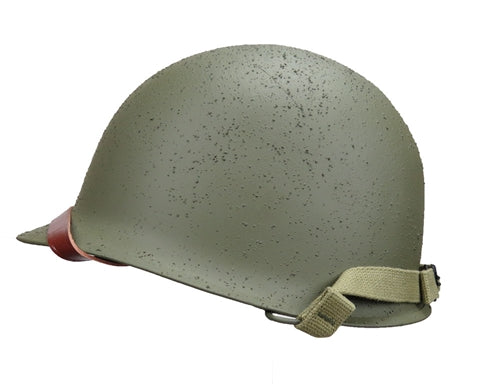
smaller brim that ensured precipitation, as well as debris and shrapnel, were kept away from the face. It used a manganese steel outer shell and molded plastic liner. This was a very heavy helmet. Still, helmets were not yet bulletproof.
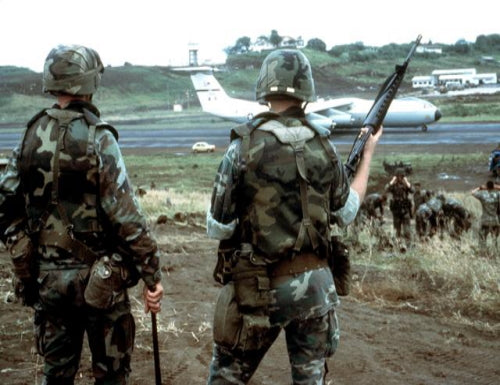
Finally, in the 1980s, the Personal Armor System Ground Troops, or PASGT helmet was created. This was the first ballistic helmet, inspired by the creation of DuPont Kevlar. This material is noted as a game-changer in the world to stop pistol-caliber bullets and was ergonomically designed for comfort. Clearly, the ballistic helmet has evolved in response to everything from military tactics and technologies to advances in weaponry. The next question, then, is whether or not you might want to invest in one.
Why Do You Need a Ballistic Helmet?
Can just anyone buy and use a ballistic helmet? Yes, as long as you are not a convicted felon, you should be able to purchase body armor, including ballistic helmets. (We will look at that in a bit more detail a little later). While many also wear “bump” helmets designed to protect the head from impact, many want the fullest protection possible – i.e., one that will help to stop a bullet.
Also, there are a lot of other reasons for wearing a ballistic helmet. One of the most significant is if you are a “prepper” looking to build your complete arsenal of survival gear. You might want a good ballistic helmet if you work in a high-risk industry, such as ATM repair, owning a pawnshop, working as a Forest Ranger, or at a shooting range. Many subpoena servers in high-crime areas wear them, bodyguards may use them, private investigators often own ballistic helmets, and some journalists invest in them, too.
Even residents of high crime areas or those who have had one or more home invasion experiences may want a helmet for safety and peace of mind.
There are many reasons to purchase and use a ballistic helmet, and that means it is time to learn the varieties available. The most common uses of ballistic helmets, though, are in the groups below
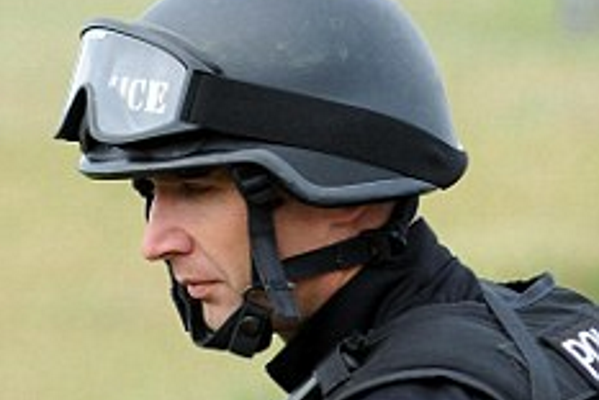
Police Applications
Police personnel in combat situations
 Military Applications
Military Applications
Military personnel in war or war-like situations
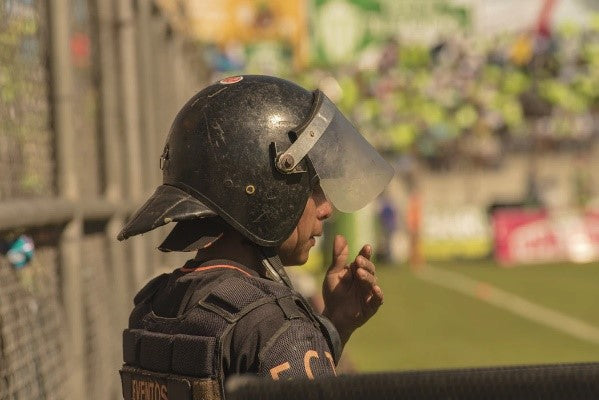 Armed Security Applications
Armed Security Applications
Armed Security forces in life-threatening situations
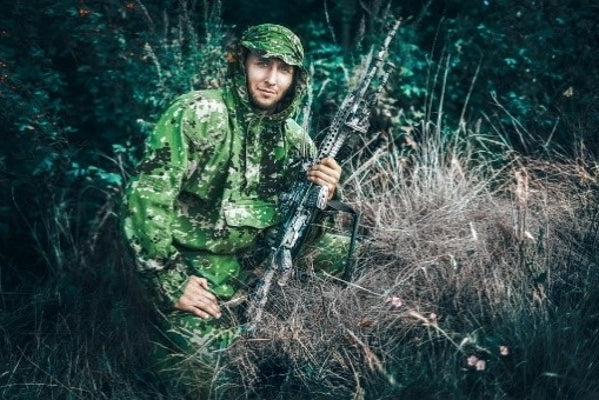 Hunting Applications
Hunting Applications
Hunters to safeguard themselves from stray firing
Ballistic Helmet Types
From law enforcement and military to hunters, not all groups wear the same helmet. There are a few varieties of ballistic helmets readily available. They include:
- PASGT – You already learned that the Personnel Armor System for Ground Troops (called pass-get by most) was standard issue for the military through the 2000s.PASGT helmets are Crafted of ballistic materials, they use a phenolic resin system and 19 layers of Kevlar. They are meant to halt shrapnel and some ballistic projectiles.
- MICH/ACH – The Modular Integrated Communications Helmet is the next step up from the PASGT. The ACH is a step beyond the MICH, and both are made from advanced-grade Kevlar. Meant to halt handgun bullets at well as shrapnel and ballistic projectiles, they are also built with four-point retention for comfort.
- ATE/High Cut/Maritime Cut/FAST – This is a style that uses all of those names, with ATE signifying “above the ear.” This is the top of the line, latest technology, and while designed initially for maritime use, it works well with communication gear.
Also, there are a lot of other reasons for wearing a ballistic helmet. One of the most significant is if you are a “prepper” looking to build your complete arsenal of survival gear. You might want a good ballistic helmet if you work in a high-risk industry, such as ATM repair, owning a pawnshop, working as a Forest Ranger, or at a shooting range. Many subpoena servers in high-crime areas wear them, bodyguards may use them, private investigators often own ballistic helmets, and some journalists invest in them, too.
Even residents of high crime areas or those who have had one or more home invasion experiences may want a helmet for safety and peace of mind.
There are many reasons to purchase and use a ballistic helmet, and that means it is time to learn the varieties available.
Helmet Accessories
There are a multitude accessories available for a ballistic helmet but we carry the ballistic visors. The ballistic visor is NIJ Level IIIA and will offer protection to the face from stray firing.National Institute of Justice (NIJ) RATING SYSTEM
When purchasing any helmet, you must know the results of NIJ (National Institute of Justice) required testing for that helmet. This helps you to know with certainty the level of protection it offers from ballistic objects.
The NIJ has set the standards for decades and created the ballistic resistance standards to ensure bullets cannot penetrate the body armor or helmet.
Another of the more important factors to consider is fragment performance, which is another way of describing the helmet’s resistance to penetration. However, it describes resistance to bullet fragments rather than bullets. Any helmet should stop fragments at a speed of 2400fps or more.
There is the official Rating System (currently called NIJ 101.06 standards) that body armor, including helmets, are assigned. They include:
- NIJ Level IIA – Used to describe soft body armor, it is made of Kevlar, Twaron or Goldflex and will stop a 9mm FMJ (Full Metal Jacket) round at a speed of ~1165 feet per second (ft/s) and a .40 S&W FMJ at 1065 ft/s.
- NIJ Level IIIA – This can halt .357 Sig FMJ FN (Flat Nose) bullets traveling at a velocity of ~1470 ft/s and .44 Magnum SJHP (Semi Jacketed Hollow Point) rounds at a velocity of 1430 ft/s. It is used in hard armor and ballistic shields
- NIJ Level IV – These are the hardest armor and meant to take a single hit from an armor-piercing rifle.
Legal Implications
Because a ballistic helmet is a form of body armor, it pays to know if there are any legal implications in seeking to purchase or owning one. Generally speaking, current US Federal Law ways that body armor (including helmets) fall under federal statue USCA Section 931. Basically, this says that anyone with a violent felony on their record cannot buy body armor of any kind. The only exception is if they are obliged to wear one for their work.
Some states also have unique rules around body armor and ballistic helmets, blocking the purchase or increasing the severity of sentencing if the gear is used in the committing of a crime.
Also, many states make it a crime to use any sort of body armor, including helmets, shields or vests on school grounds or school functions. And you will always want to explore your state’s laws when looking to purchase any sort of ballistic gear online.
OBSOLETE BALLISTIC HELMETS
One should make sure and avoid purchasing one of the obsolete ballistic helmets are lusted below as they do not offer the much needed protection in today's world.
In general, any helmet lacking in ballistic materials is obsolete, simply because it cannot stop the momentum of projectiles and shrapnel. Obsolete helmets are also those that have not integrated the latest in ergonomic design and adjustable straps that help to reduce injury from blunt force and even motion-induced injuries.
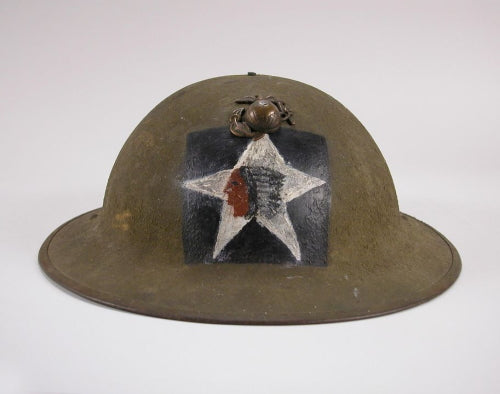

As we saw in the history of ballistic helmets, they have evolved per the demands put upon them. The Brodie and M1 helmets are now considered obsolete because they lack the right tech and design.
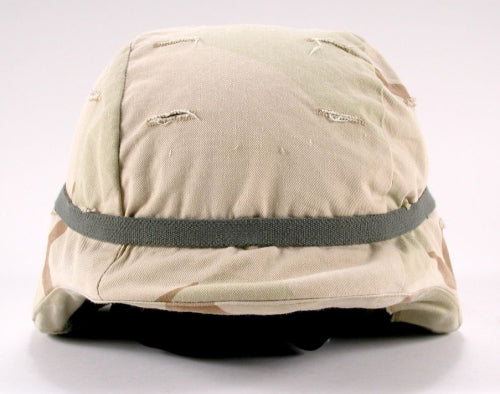

Other obsolete helmets would include the M1917 known as the Kelly helmet and the first ever issued to Armed Forces, and even some iterations of the PASGT used from 1979 to 2003 can be seen as out of date.
Top Ballistic Helmet Options
There are several types of ballistic helmets but we have listed the top rated and most popular ones among them here:

PASGT IIIA Helmet
Designed to protect against ballistic threats as well as shrapnel and bullets, it is preferred by the military, SWAT teams, special forces, and the police. This is the model for those who want a lighter weight and lots of protection. Designed with a 7-pad harness to reduce the risks for head trauma, it can be adjusted at six unique points, as well as at the chin strap. It features a padded front brow and adjustable sides.
Rated at NIJ IIIA, it will live up to NIJ Standard 0101.06 guidelines, halting 9mm FMJ and 44 Magnum SJHP rounds.
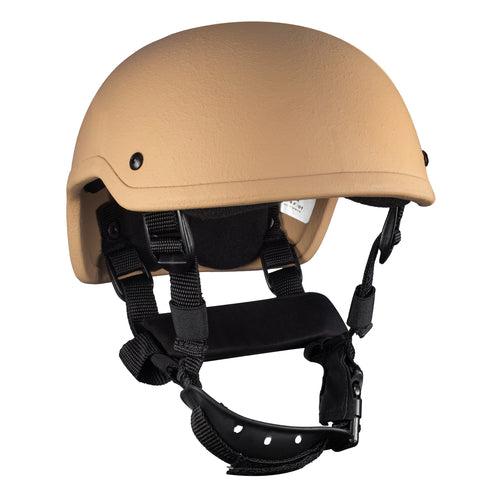
Special Forces Helmet
Lighter than other helmets, and designed to allow optimal line of sight, this is a helmet without any ear coverage. Ideal for those in special services as well as SWAT, it is comfortable and yet high performing.
It, too, has the 7-pad harness system meant to reduce the risks of head trauma and is a high ballistic performer crafted of para-aramid fiber. It features a quick-release, adjustable chin strap and six further adjustments for optimal performance.
Rated at NIJ IIIA, it will also reach NIJ Standard 0101.06 guidelines, halting 9mm FMJ and 44 Magnum SJHP rounds.
Back face deformation, BFD, is also an issue of significance with these two helmets as they have been designed to minimize back face deformation. This occurs when a helmet is struck by a projectile and bulges at the opposite side – causing blunt trauma to the head. A 9mm BFD should be less than 25mm anywhere on the helmet.
Both the PASGT IIIA and the Special Forces helmets above have minimal BFD ranging from 9mm to less than 15mm from 357 Magnum and 44 Magnum.
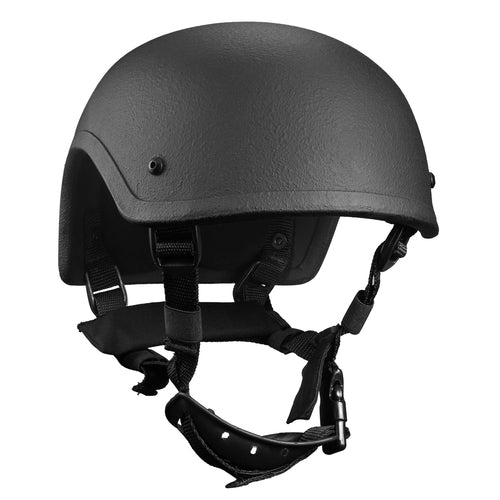
Crewman Helmet
Crewman Helmet Used by soldiers who wear communications gear as well as by tank crews without room for a larger helmet, this is a high fragmentation performer with a lighter weight and lots of adjustable options. There are six points of adjustment along with the quick-release chin strap. This also features a 7-pad crown mesh harness for comfort, a padded front and side area, and protection of NIJ Level IIIA. This means it can halt V50 of 600 m/s as tested against a 22 caliber projectile.
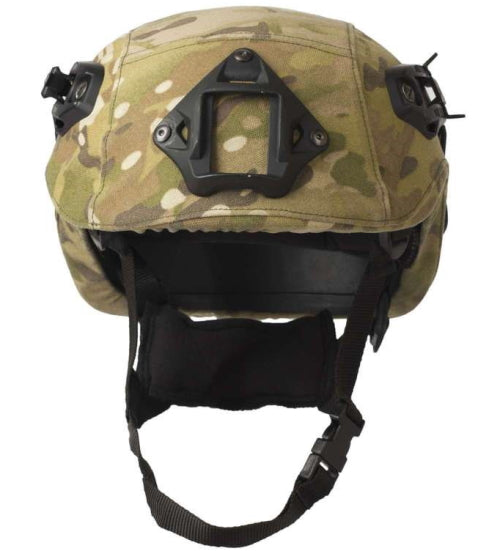
Advanced Special Forces Helmet
Offering NIJ IIIA Level protection, this helmet lives up to its name with lots of adjustable harnessing for optimal performance and wear. Crafted of high-tenacity ballistic Aramid fiber, it has a four-point chin strap and chin cup. It is water, flame, and heat resistant and can pair with almost any field gear, including communications and night vision devices.
As the name of this helmet implies, it is meant to be a top performer in the field and offer the highest levels of protection.
Designed to accept many accessories, this helmet can be easily partnered to a ballistic visor, which is an accessory to consider if you believe you will find yourself in situations where facial protection is valuable.
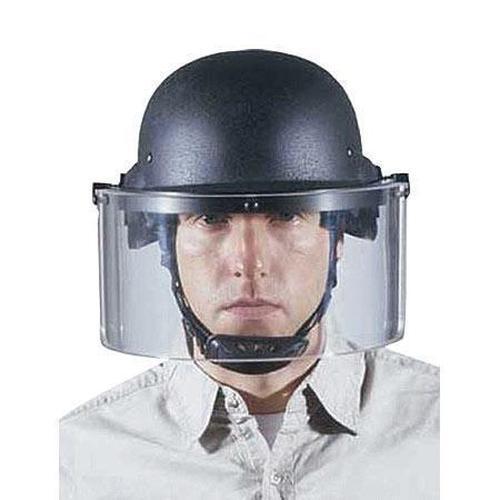
Ballistic Visors
Ballistic Visors Helmets, as we know, were designed to protect the head from projectiles. The face and eyes, however, are often at risk. An NIJ Level IIIA Ballistic Visor can be attached to some helmets and allow the wearer to enjoy protection against blast shock waves, ballistic threats, and blunt trauma.
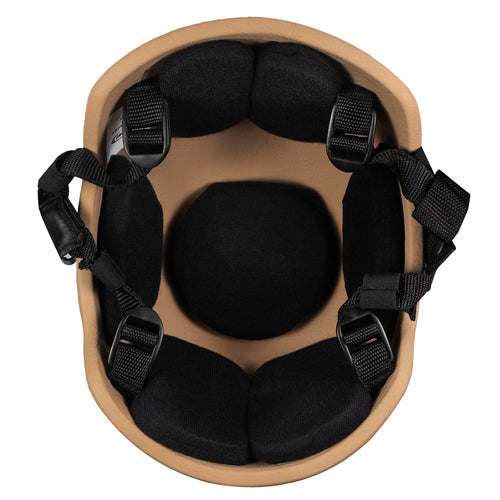
7 Pad Harness v. Regular Harness
Another issue to consider is that of the harnessing in the helmet. Originally, H-style harnesses were minimal and didn’t do much more than hold a helmet in place. Today, however, they have evolved significantly. There are variations in design, and many have six points of adjustment while using a variety of systems for adjustment, including ratcheting and sliding mechanisms. All are designed to offer stability and protection.
Holding the wearer in a straight “force line” harnesses and chin straps create stability when wearing the helmet alone or with other accessories, such as night-vision goggles or a face shield.
Add the 7-pad system to the interior of the helmet, and it will ensure trauma protection as well as providing the wearer with optimal performance.
How to Make Sure Your Ballistic Helmet Fits?
Ask any experts about the best way to get the most out of a ballistic helmet, and the one thing they will say is to measure carefully. This is crucial to comfort, performance, and safety. Using a soft tape measure, use the chart below to take the best and most accurate measurements for your needs. You can also access the helmet sizing chart < href="https://bestsafetyapparel.com/pages/learnmore#Helmet">here.
Remember, the helmet should be comfortable enough that you want to wear it, and this means that precise fitting is necessary. While you need to pay attention to the weight, be sure your helmet won’t cause discomfort due to rubbing or too much movement.

Ballistic Helmet Tips
In addition to choosing the right helmet and ensuring you’ve got accurate measurements for a good fit, it is important to give attention to the retention system. The helmet needs to be firmly in place, whether you are wearing it while moving or when there may be an impact. Also, be sure it can be paired with the accessories you are most likely to use.
Ballistic Helmet FAQs
For your convenience we have put together a list of most frequently asked questions by our customers. Please make the best use of them.
As many will attest to, a ballistic helmet is valueless if it cannot do what it is intended to do. The maker of any helmet will submit it to an NIJ approved testing facility and offer summary reports on the testing. They should also clearly explain the materials used, such as DuPont Kevlar, and so on.
The NIJ uses 5 different threat levels, and ratings apply to them based on their ability to stop specified rounds at specified velocities:
- Level IIA - Protects from 9mm and .40 Smith and Wesson rounds
- Level II - Same as the IIA, but may sustain damage when a 9mm round is traveling at higher velocity. It also offers some defense against .357 magnum rounds
- Level IIIA – Works against 9mm rounds at speeds of up to 1400 feet per second. Also shields against .44 magnum and .44 caliber rounds
- Level III – Some defense against rifle rounds in addition to protection similar to the other levels.
- Level IV - Highest level and may defend against armor piercing rounds
Often described as an upgrade, 7-pad harnesses offer far more protection against head trauma, as well as guaranteeing a better fit.
We don’t recommend buying any type of body armor from a military surplus vendor. This has to do with the demonstrable quality and safety of the gear. Without demonstrable evidence of adequate NIJ testing, you may not get the protection you require.
A snug fit is important on a ballistic helmet as it ensures comfort and safety. A loose helmet may move or shift out of place in the event of an impact or other blunt force. This can lead to greater injury or even prevent protection from being offered. Accurate measurements are crucial, and if a helmet is loose, an upgraded 7-pad harness with ¾” pads may be required.
As noted, there may be some state laws preventing your purchase of a ballistic helmet, and current Federal Law says that any convicted felon may not purchase body armor, including ballistic helmets. The exception is if it is required for work.
All ballistic helmets are tested and assigned to their appropriate NIJ level. It should provide protection to that specific level. Still, it is important to keep in mind that even the most protective may be rated for something like a single round or a specific caliber, but not repeated exposure.
No, as noted, helmets have BFD (back face deformation issues) and may be designed to take a single hit from a specific caliber or speed. And like all other materials, those used in a helmet do age and weaken with time and exposure or use.
Look specifically at the NIJ rating for the helmet. This gives you a clear indication of the greatest threats from which it will protect you. Remember that you may need to upgrade to a ballistic face shield or a more adjustable harness and chin strap to ensure optimal fit and protection. Remember, too, that some helmets are designed for specific functions, but the design may eliminate some areas of protection. For example, the Special Forces helmets may offer less side protection while enabling greater line of sight and movement.
- PASGT – This offers full coverage along the side of the head and at the top of the neck for optimal shielding from shrapnel. It is designed for high ballistic performance and low weight, using a suspension system for optimal fit, it will have 7-pad harnessing for further protection.
- Special Forces – A lightweight helmet, it has high ballistic performance and is designed with a suspension system to support optimal fit. It will have no ear coverage and will adapt to the use of accessories.
- Crewman – Designed for optimal fragmentation performance, it is lightweight and padded at the front brow but does not provide full coverage around the ears or side of the head.
- Advanced Special Forces – Adjustable and compatible with the widest variety of accessories, it is going to offer protection from projectiles and head strikes as well as being bulletproof. Ergonomics are important, but this does not offer ear or mouth coverage.
You must ensure that your helmet fits properly and measure accurately. Wear anything that will be worn along with the helmet to get the right measurements. Remember to remain relaxed and hold your head in an upright position. Straps will be adjustable, but it is the measurements that ensure your helmet will fit properly and allow optimal movement.
A ballistic helmet is not going to be fully fireproof. It can offer some head coverage, but any prolonged exposure to open flames will eventually weaken the capabilities of the materials.
CONCLUSION
Do you need a ballistic helmet? The list of jobs in which they are essential is lengthy, and it is a good idea to invest in the best you can afford. If you are in any sort of setting in which you wish you had protection on your head, then, yes, you need a ballistic helmet.
If you are just living in the modern world and worried about personal safety, then you should explore your options in this remarkable level of defense.
Federal laws say that you can own and use body armor – including a ballistic helmet. Unless you are a convicted felon, you should be able to use what you have learned here and identify the right helmet for your needs.
Choose carefully and remember to take very accurate measurements. Turn to a premium vendor, too, as this is just as important to the outcome as all of the other choices you will make when buying a ballistic helmet.
At Best Safety Apparel, you will find a full selection of ballistic helmets. You can visit our website or get in touch by phone at 888-877-0090.




